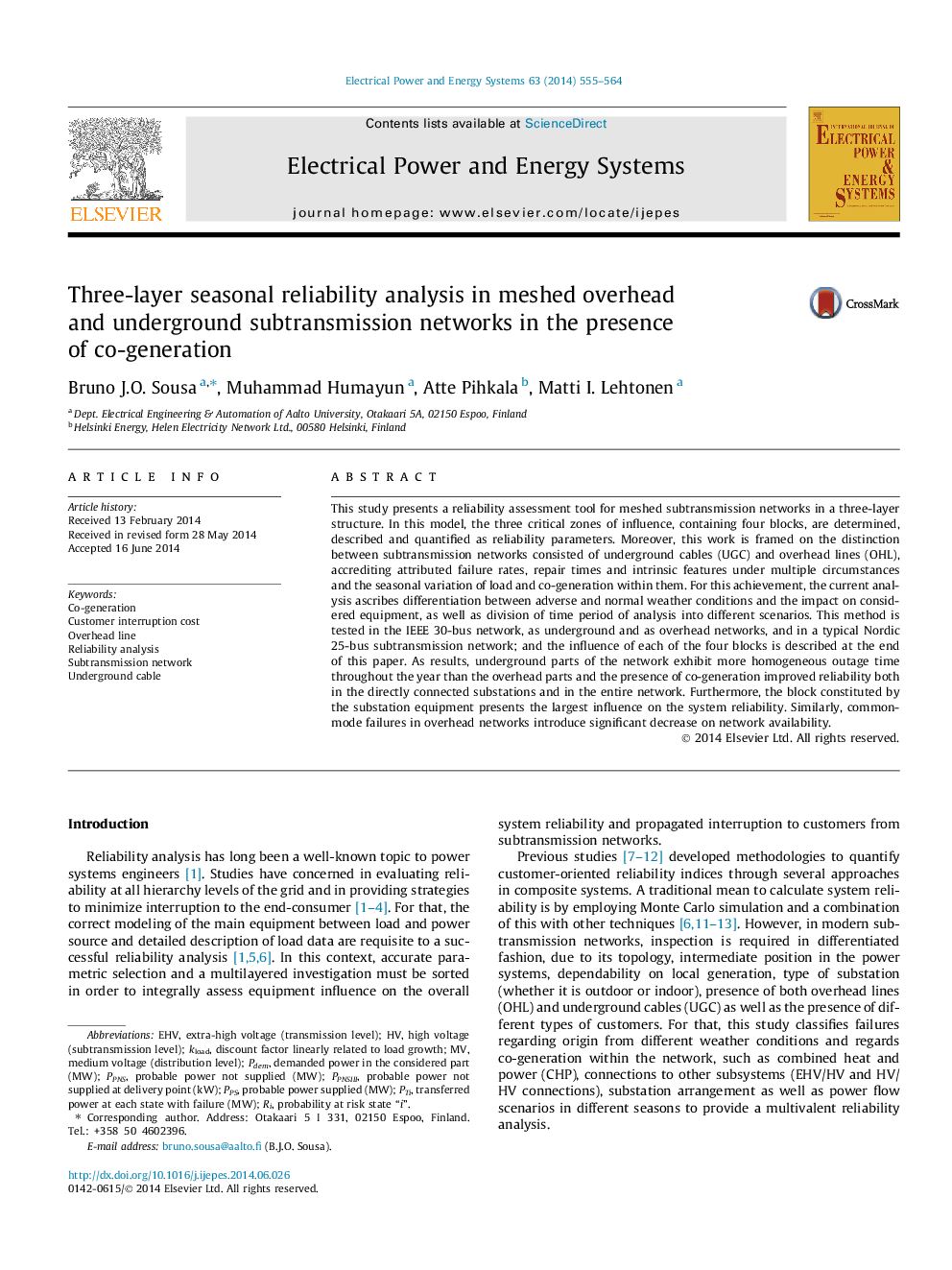| Article ID | Journal | Published Year | Pages | File Type |
|---|---|---|---|---|
| 6860168 | International Journal of Electrical Power & Energy Systems | 2014 | 10 Pages |
Abstract
This study presents a reliability assessment tool for meshed subtransmission networks in a three-layer structure. In this model, the three critical zones of influence, containing four blocks, are determined, described and quantified as reliability parameters. Moreover, this work is framed on the distinction between subtransmission networks consisted of underground cables (UGC) and overhead lines (OHL), accrediting attributed failure rates, repair times and intrinsic features under multiple circumstances and the seasonal variation of load and co-generation within them. For this achievement, the current analysis ascribes differentiation between adverse and normal weather conditions and the impact on considered equipment, as well as division of time period of analysis into different scenarios. This method is tested in the IEEE 30-bus network, as underground and as overhead networks, and in a typical Nordic 25-bus subtransmission network; and the influence of each of the four blocks is described at the end of this paper. As results, underground parts of the network exhibit more homogeneous outage time throughout the year than the overhead parts and the presence of co-generation improved reliability both in the directly connected substations and in the entire network. Furthermore, the block constituted by the substation equipment presents the largest influence on the system reliability. Similarly, common-mode failures in overhead networks introduce significant decrease on network availability.
Keywords
Related Topics
Physical Sciences and Engineering
Computer Science
Artificial Intelligence
Authors
Bruno J.O. Sousa, Muhammad Humayun, Atte Pihkala, Matti I. Lehtonen,
